‘com.apple.commerce.client error 500’ in App Store [5 Fixes]
Several macOS Mojave users are reporting that they are getting the “com.apple.commerce.client error 500” error every time they try to sign in or download an application from App Store. In some cases, this error might appear while purchasing an application in the App Store. The purchase mentioned in error message “An error occurred during purchase” is not always meant for paid applications but also valid for free applications.

What is Causing the com.apple.commerce.client error 500?
We investigated this particular issue by looking at various user reports and the repair strategies that were commonly used to troubleshoot and resolve the issue by users finding themselves in a similar situation. Based on our investigations, there are several different scenarios that are known to trigger this particular error message:
- iCloud Account is glitched – On macOS, there’s a chance that the issue is caused by a case of a glitched iCloud account. Whenever this happens, you will be unable to use the App Store to download or update any applications. In this case, you can resolve it by resetting the iCloud account.
- Trust level of certificate is not recognized – In some case, the “DigiCert High Assurance EV Root CA” certificate’s trust level can be responsible for this particular error. The computer will be unable to establish a connection to the App Store without using this certificate.
- Payment details are outdated – As it turns out, this issue can also occur if the payment details are outdated for your Apple ID. You can simply resolve the issue by adding or updating the payment details from your phone and then log in to your macOS.
- App store temporary data is corrupt – Another potential case in which this error occurs is the corrupt or broken temporary data for App Store. Several users finding themselves in a similar situation have reported that they managed to resolve the issue after removing the temporary data.
If you’re looking for a solution to resolve this exact error message that is keeping you from using App Store in macOS Mojave, then this article will provide you with a list of quality troubleshooting steps. Down below, you’ll discover a collection of methods that have been confirmed to work by at least one user that was affected by the same issue.
Follow the methods in the order they are presented since they are ordered by efficiency and severity. One of the methods below is bound to fix the problem, regardless of the culprit that is triggering it.
Method 1: Resetting your iCloud Account on macOS
Your iCloud account can be connected to multiple devices, which can sometimes create a problem for one of the devices. For macOS, this problem can cause the App Store not letting you sign in or download any applications. The simple sign out and sign in again method can help you resolve this issue.
- Click on the Apple logo in the menu bar at the top and choose System Preferences in the contextual menu, then click on iCloud

Opening iCloud settings from System Preferences - Now click on the Sign Out button at the bottom left

Sign out from iCloud - Now sign in back again and go check your App Store.
Method 2: Changing the Keychain Access Settings on macOS
Keychain Access stores passwords and information about the account. It also provides you direct access to modify the trust level of certificates. Sometimes a certificate bug can prevent you from logging in to your App Store or downloading applications. You need to change the trust level of “DigiCert High Assurance EV Root CA” certificate to never trust and restart the computer. Then change it back to the use system defaults and it will fix the certificate bug.
- Hold Command key and Press Space to open Spotlight, then type Keychain Access and Enter

Opening Keychain Access through Spotlight - Click on System Roots in the left panel
- Search for “DigiCert High Assurance EV Root CA” in the list and double-click to open it
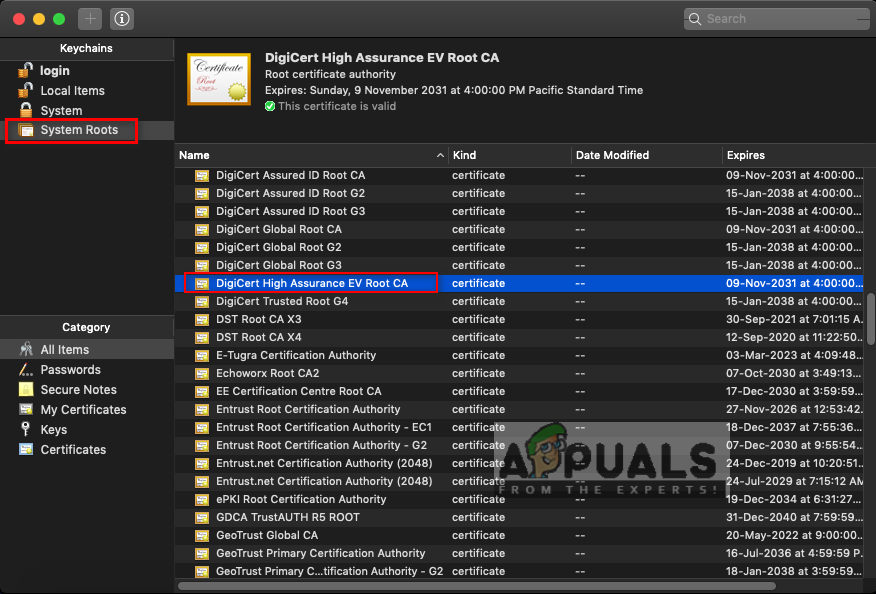
Searching and opening DigiCert High Assurance EV Root CA in System Roots - Expand Trust option and change “When using this certificate” to Never Trust, then restart the computer
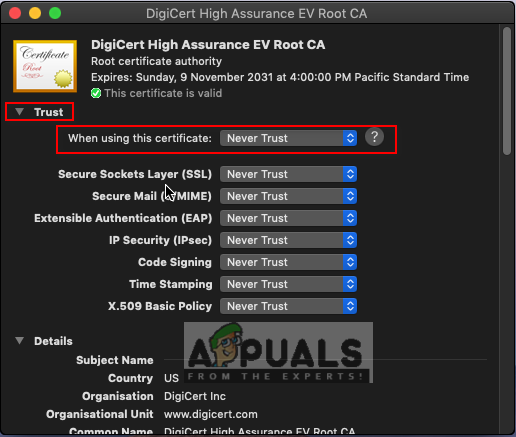
Changing the when using this certificate option to never trust - Go to the same option and change the option back to Use System Defaults
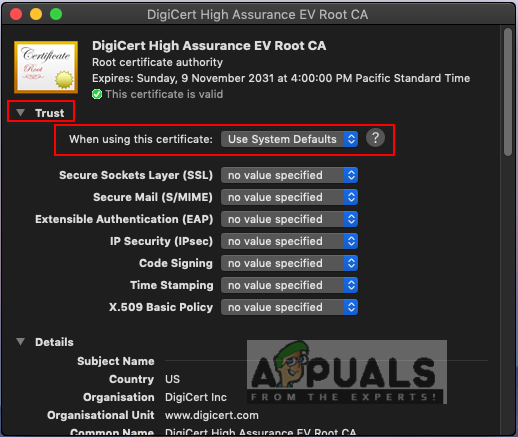
Changing it back to Use System Defaults - Now you will able to sign in or download applications from App store without any issue.
Method 3: Update the Payment Details on Your Phone
Sometimes your Apple ID information can be the issue causing the problem for logging in to account or downloading applications from App Store. This error can also appear when purchasing an application from the App Store. You can use another device to update your details (Payment details) and after that sign in from macOS.
- On the Home screen of your phone, tap on Settings
- Tap iTunes & App Store option and then tap on your Apple ID

Opening Apple ID on iPhone (You might be asked to sign in)
- The options menu will appear, choose View Apple ID
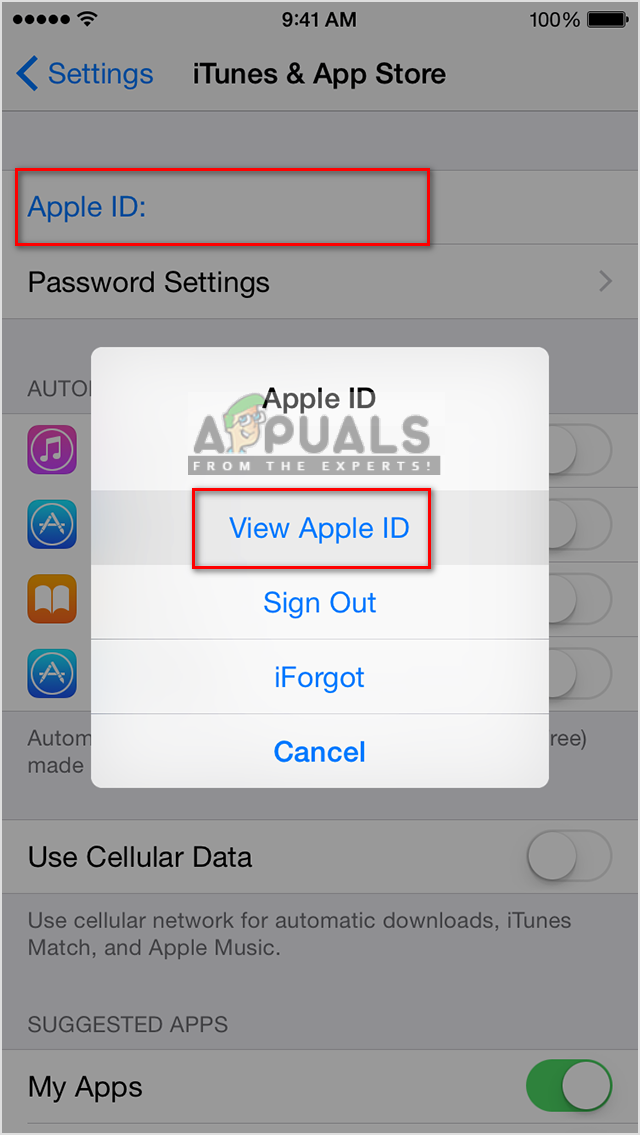
Choose View Apple ID - Tap Manage Payment (if using an older version of iOS, tap Payment Information)
- You can Add Payment Method or Edit the one by changing the information.

Updating or Adding Payment details - Now login to your App Store in macOS using the same Apple ID
Method 4: Changing App Store Settings through Terminal
In this method, we will be using the default command to modify the settings for App Store which is stored in .plist files. Every application has few settings that are not available in App’s preferences and can be accessed through the defaults command.
Important: Make sure you log out of the App store and close it before running this command through Terminal.
- Hold Command key and Press Space to open Spotlight, then type Terminal and Enter
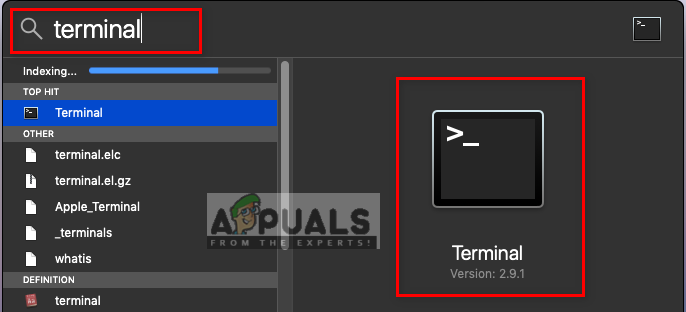
Opening Terminal - Now type the following command and press Enter:
defaults write com.apple.appstore.commerce Storefront -string "$(defaults read com.apple.appstore.commerce Storefront | sed s/,8/,13/)"

Command in Terminal - Go back to App Store, Sign in and try to download applications.
Method 5: Empty App Store’s Temporary Download Cache Folder
Most of the time applications stop working because of the temporary data becoming corrupt. An easy method to fix this would be by removing the temporary data. Temporary data is just used to speed up the tasks for users by saving the information related to the user. It will be created again after using the application.
- Hold Command key and Press Space to open Spotlight, then type Terminal and Enter

Opening Terminal - Type the following command to open a directory:
open $TMPDIR../C/com.apple.appstore/
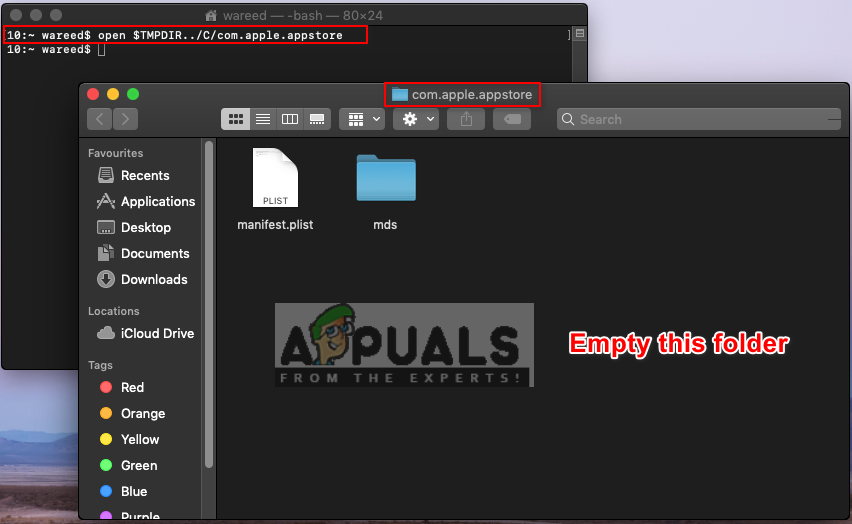
Opening directory through Terminal - Empty this folder by moving all the items to Trash
Note: You can make a backup of files before removing it, just to be safe. - Open your App Store and try downloading applications.





